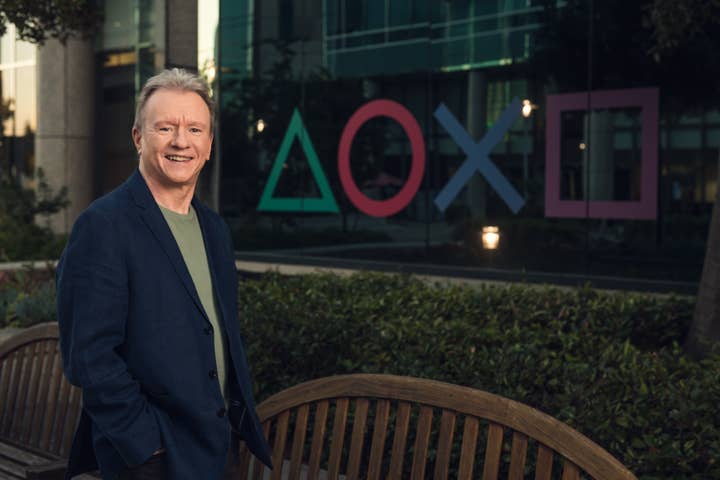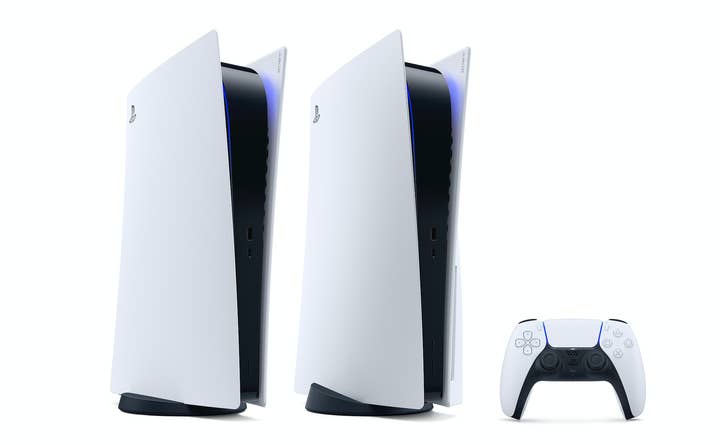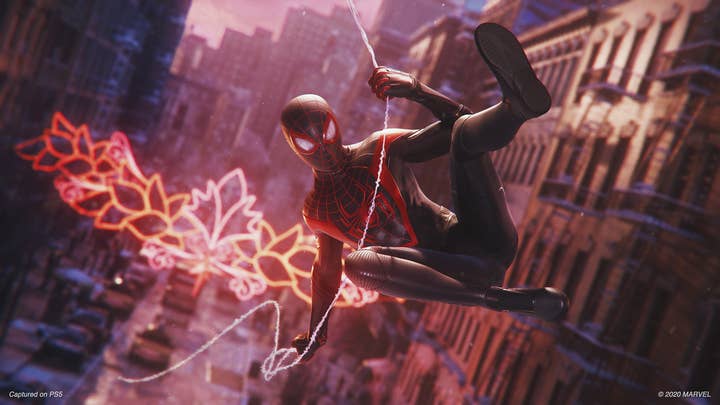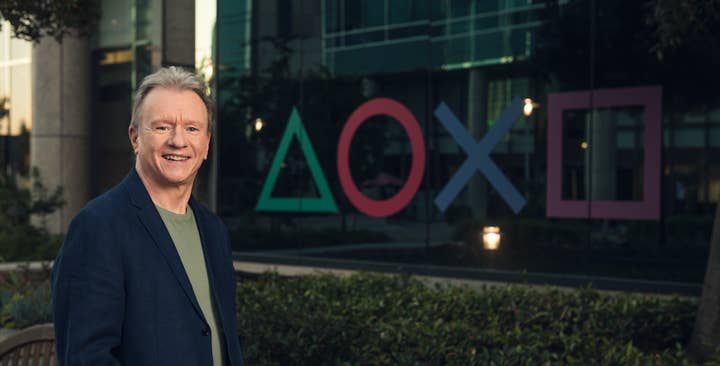PlayStation CEO Jim Ryan on making PS5 more successful than PS4
"I've done them all, and this has easily been the most extraordinary PlayStation launch of any of them."
Over the past few weeks, PlayStation head Jim Ryan has received more than his usual share of emails.
From the moment PS5 sold out (within minutes), there's been people clamouring to get hold of one for launch day, and who better to help them get one than the guy in charge? That bit is not surprising. Ryan has been around for the launch of every PlayStation there has ever been -- he's used to this.
But what has taken PlayStation's CEO by surprise are the types of people who are sending the emails.
"Since the pre-orders went live, every day I open my inbox to some very emotional and heart-wrenching emails from lots of people," Ryan says. "But so many of them are from people in the mid-50s, who say they've been a PlayStation gamer since 1995, and they're asking us to help them get hold of a PS5.
"With PS4, we were coming out of a very lacklustre PS3 platform... Now we are starting with 100 million gamers"
"I am astonished at the number of people who are like that and writing to me. It's really taken me back. It's indicating that demographically the age profile is expanding rapidly with each generation. And at the same time, I get emails from really young gamers, frequently beautifully written... better written often than the 53 year-old gamers. They're just as passionate, just as interested and just as excited by PlayStation as somebody who is old enough to be their father, maybe even their grandfather."
This isn't Ryan gloating about the sheer popularity of the PlayStation brand; it's actually part of a conversation about how PlayStation 5 might be able outsell PlayStation 4, which has now shipped almost 114 million consoles worldwide. Sony CFO Hiroki Totoki said during the company's second quarter earnings call that the company is "committed" to surpassing what PS4 has achieved. That's not going to be an easy feat.
Ryan's anecdote about his inbox highlights the opportunity he sees of different age groups playing on PlayStation. Yet I countered his story with one of my own. I'm in my mid-30s, and all of my friends who spent their youth playing Metal Gear Solid and Crash Bandicoot are now busy with careers and kids. Very few of them are even considering a PlayStation 5 as a result.

The phenomena of people 'ageing out' of games consoles is a very real one in my world right now, and that's perhaps one reason why there hasn't been a huge amount of audience growth for the console industry over the past 20 years.
"First of all, I think -- and this is hypothesis -- but maybe some of the 50 year-olds [who emailed me] did tune out for a few years while they were having their kids and growing up, and then came back to us when they had more time and money," Ryan suggests. "A lot of this comes down to the stickiness and tribal nature of the community that we create. That sense of community probably didn't exist to the same extent. It certainly existed, but it was more two mates sitting on a couch playing FIFA together, which by its very definition required a physical proximity, and was therefore harder to organise.

"We have the data to support this -- the networked nature of entertainment these days allows for communities to be massively more sticky, and kind-of homogeneous. The concept of stickiness is that once you're stuck it's hard to unstick. That probably gives us an opportunity to retain those people, where in the past maybe they've gone."
We have been speaking about how PS5 might outsell PS4, but install base is actually quite an outdated way of judging the performance of a console. If we measure success by install base alone, then PlayStation peaked over a decade ago with its PS2.
"It's become a lot more nuanced," Ryan agrees. "For example, one reference point, we sold a lot of PS2s, but many of them were at $99, on a format that was very, very heavily pirated. Right now the metric is engagement, and that obviously can be judged across two axis: the number of people who engage with you, and the amount of time that each of those people spend engaging with you.
"We are increasingly bullish in terms of the number of people that we think may engage with PS5. Firstly, because we don't begin from a standing start like we did with PS4, when we were coming out of a very lacklustre PS3 platform, with a low level of networking across the community. Now we are starting with 100 million gamers, who we hope to transition very, very rapidly onto PS5. And it's an engaged, tribal, networked community, who will be deeply and profoundly engaged with their PlayStation 5, we hope, from a very early moment.
"The work we've done with female protagonists, we see that resulting in increased presence of the female demographic within the PlayStation community"
"The second is that the PS5 has been built as a networked device, with features and functionality coming out of the experience from the last six or seven years, designed to give networked gamers a better, richer, deeper, faster, more seamless network gaming experience. I'm sure you've seen the [PS5] UX unveil -- which is very difficult to do remotely, but I think the guys did a pretty good job... All of those adjectives that I used just earlier, they were in mind when we designed that UX."
Install base isn't the only measure of success for PlayStation 5, but it is clearly an important one. There is still that goal for PS5 to outsell PS4, and it's going to be a challenge. PS4 may have arrived on the back of a disappointing PS3, but it also launched while its direct competitors at Microsoft and Nintendo were floundering.
Ryan says the expanding demographics and "stickiness" of the PlayStation experience is one way in which it'll bring in more customers. But there are other opportunities.
"A lot of the work that we've done with female protagonists in gaming, we definitely see that resonating and resulting in increased presence of the female demographic within the PlayStation community," he says. "And then there's obviously geography. The PS4 generation saw us make huge strides in Germany and the Middle East, and I think there is further progress to be made in both of those areas. But equally, I think Asia -- outside of Japan -- has huge potential for us. And Latin America has huge potential for us."
The geographical reach of PlayStation is already very strong. The brand has a significant presence in markets where its competitors barely touch, including parts of Eastern Europe. And it's an advantage the business plans to make the most of.
"When I was in charge of Europe, we had a pretty clear template for the way that we would open up markets," Ryan continues. "Some markets opened up faster than others. Germany took some time, but we got there. Middle East, some parts of that were very difficult, but we got there. Having very competent, on-the-ground teams with simple but focused distribution, and proper investment in the brand and proper marketing, can quite quickly yield significant dividends.

"Latin America in particular can be very difficult. Currencies, import tariffs... very complicated geopolitical situations in a lot of countries. I won't pretend that it will be easy, but when you look at the statistics, the maths of it, there are definitely opportunities that we should seek to exploit."
With the launch of PS5 just a few weeks away, much of the conversation has focused on the future of that platform. It's going to be a big launch. Ryan reiterates the fact that there will be more PS5s at launch than PS4s -- "Considering everything we've had to contend with, that's a considerable achievement," he says, referring to the COVID-19 pandemic.
But PS4 will remain an important platform for a while yet. There are over 100 million customers on that device, and recent hits like The Last of Us: Part 2 show how engaged that audience remains. In fact, with the coronavirus pandemic, the PS4 install base is as engaged as it's ever been. It's no wonder that Sony is planning to make several of its upcoming titles playable across both PS4 and PS5.
"Obviously, our eyes and our horizons have lifted with regards to what's possible with that PS4 community, based on what we've observed over the last six months," Ryan says, referring to an increase in players as a result of COVID-19 lockdowns. "That can be quite powerful, because in 2021, 2022... that PS4 community that we've spoken about, they will be the vast majority of people on PlayStations during that time. It is crucial that we keep them engaged and happy. And the last six months have demonstrated that we could do that to an extent that we didn't think possible when we were setting our minds pre-COVID."
"I invite anybody to look at the launch window line-up of PS4, or PS3, and compare it to what we are going to bring on PS5. There's no comparison"
If launching a new console during a pandemic wasn't tough enough, the other challenge for PlayStation is the competition. Nintendo is in a strong position right now, whereas Xbox has been rapidly buying new studios to ensure it can capture more customers for its Game Pass subscription service.
Microsoft's acquisition of Bethesda for $7.5 billion raised a few eyebrows, but it's really just a headline moment for an industry that's been consolidating for some time. More games companies have been going public and using those funds to go and acquire, while giants like Microsoft and Tencent have been actively seeking teams to buy. Sony, too, has been getting involved with its $229 million acquisition of Spider-Man developer Insomniac.
Ryan says that more acquisitions are possible, but he was eager to remind us that Sony's existing studios have grown considerably over the last generation.
"It's probably not widely appreciated or understood, to what extent that we have grown our own game development capability organically over the course of this generation," he says. "Obviously, it's been helped by the acquisition of Insomniac, and it's wonderful to have them as part of the family. I would just invite anybody to look at the launch window line-up of the PS4 generation, or PS3 generation, and compare it to what we are going to bring in the equivalent phase of PS5. There's just no comparison.
"That is the fruit of not massive spending sprees, but of very, very steadily, carefully planned organic growth. Probably the best example I give... I could obviously talk about Naughty Dog, but they've always been making great games. But let's talk about Ghost of Tsushima, which has been a critical delight and certainly a commercial delight to an extent that we didn't think it would be. That speaks volumes to the work that Sucker Punch has done to build on their previous canon of work.
"We are lucky enough to have five or six studios who fall into that category... But it isn't luck, because we've been working on this for years and years. Very quietly, in a very PlayStation way, we've been building something quite special with these studios. You can do it with frenzied acquisition, or measured acquisition, or you can do it organically."
With changes across the industry, reinvigorated competitors, a global pandemic, and a troubling economic situation, PS5 arrives at a strange moment for the world and the video games business. But with a promising line-up for the next 12 months, and an engaged group of PS4 players to pull in, Ryan remains positive over what Sony's new machine will deliver.
"It's really exciting now," he concludes. "We are right on the brink. Everybody is four or five years into this, and it's really great to be so close to the big moment. You know, I've done them all, and this has easily been the most extraordinary of any of them."









